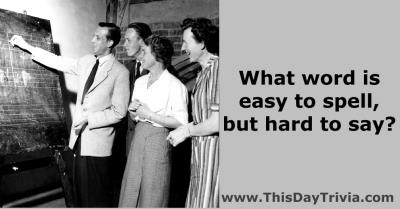









What Happened On
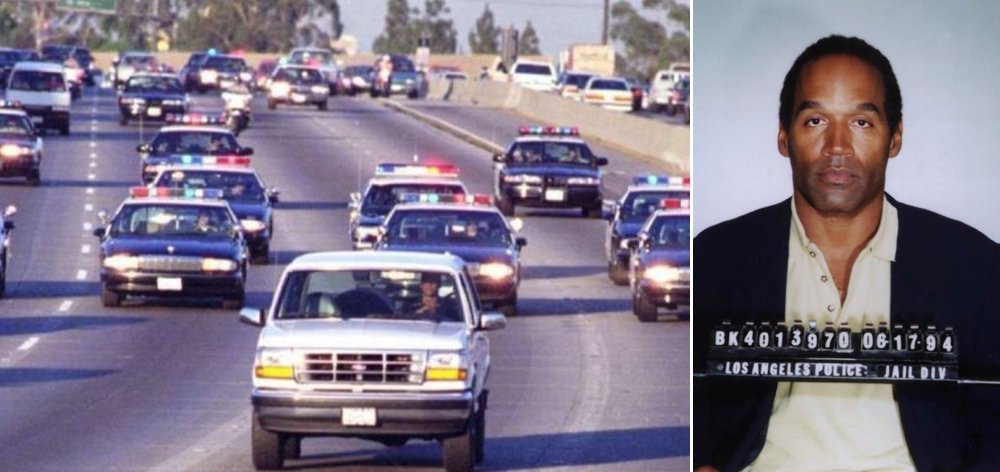

O.J. Simpson Slow Speed Chase
June 17, 1994
Football Hall of Fame running back O.J. Simpson is arrested for the murders of his ex-wife and her friend Ronald Goldman. Blood stains had been found in his home and in his car. Simpson had promised to turn himself in, but instead led police on a "slow-speed chase" across California. More than 90 million people watched live as Simpson in a white Bronco driven by friend Al Cowlings and followed by police cars and helicopters slowly made its way to Simpson's home where he surrendered.
Simpson was later found not guilty of the crime in what would be called "The Trial of the Century."


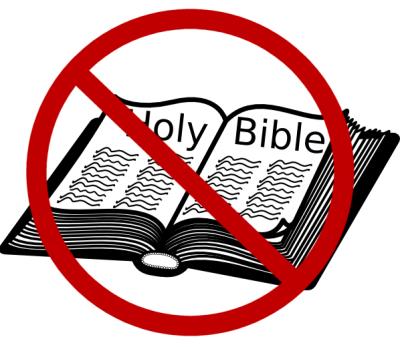


Bible Reading Banned in Public Schools
June 17, 1963
The U.S. Supreme Court rules that school-sponsored Bible reading in public schools is unconstitutional (Abington School District v. Schempp). School prayer had been banned the previous year. One of the plaintiffs, William J. Murray, claimed his refusal to participate in Bible readings at public school resulted in bullying that was condoned by school administrators.
In an ironic twist, seventeen years later in 1980 Murray converted to Christianity and eventually became a Baptist minister. His mother, Madalyn Murray O'Hair, went on to found the organization American Atheists. She was murdered by a former employee of American Atheists.



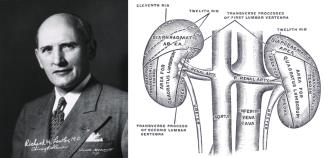 Richard H. Lawler
Richard H. Lawler
 Richard H. Lawler
Richard H. Lawler
First Human Kidney Transplant
June 17, 1950
American physician Dr. Richard H. Lawler implants a kidney from a deceased woman into a patient whose diseased left kidney had been removed due to polycystic kidney disease. This was the first time a vital human organ had ever been transplanted from one person to another. The transplanted kidney only functioned for a few months after which surgeons re-opened her surgical incision to discover her body's immune system had rejected the transplanted kidney. The 44-year-old female patient lived five more years before dying of heart disease.
Lawler was denounced at the time by both the medical and religious community. The religious community in particular denounced the idea that you could take tissue from a dead person and put it someone who was alive, and it would come back to life.
Lawler was eventually recognized for pioneering organ transplant surgery.



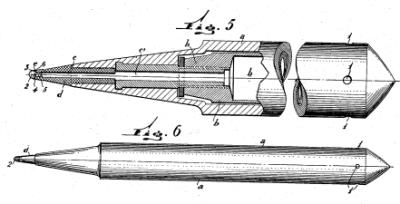


Ballpoint Pen
June 17, 1943
The first commercially successful ball-point pen is patented, by László Biró. While working as Hungarian newspaper editor, he noticed that printer's ink dried quickly leaving the paper dry and smudge free and would make a good ink for writing pens, which often left wet smudges on the paper. However, the ink was too thick for use in a typical fountain pen. So, he developed a ball tip that was free to turn in a socket, and would pick up ink from a cartridge as it turned and then deposit the ink on the paper. He originally patented his pen in Paris in 1938, but had to flee to Argentina due to the Nazis. See U.S. Patent 2390636A.
The first patent for a ballpoint pen was issued in 1888, but it and others that followed tended to clog, overflow, and not deliver the ink evenly and were not commercially successful.


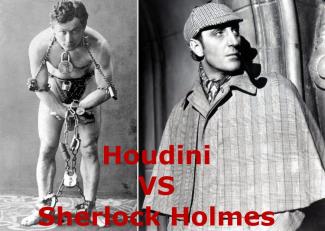


Houdini vs. Sherlock Holmes
June 17, 1922
Sir Arthur Conan Doyle's wife performs a séance for Harry Houdini in which Houdini's deceased mother sends him a message. Houdini felt that the message couldn't have been from his mother since it was in English (a language she barely spoke and never used with her son). Doyle (creator of Sherlock Holmes) was a believer in mysticism, fairies, and psychic powers. Houdini famously made it a life mission to debunk such beliefs. Doyle and Houdini had been close friends for years. This event created a rift between the two that even included threats of lawsuits as Houdini went on to debunk Doyle's favorite mediums.


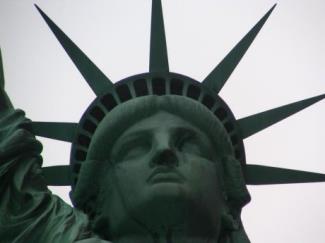


Statue of Liberty
June 17, 1885
The unassembled 151-foot-high gift from the French people arrives in New York. The French donated the Statue of Liberty, but the U.S. was responsible for building its pedestal. In 1884, the governor of New York Grover Cleveland vetoed a bill to provide $50,000 for the project. An attempt the following year to have Congress provide the $100,000 necessary to complete the project also failed. The New York committee, with only $3,000 in the bank, was unable to build the pedestal. With the project in jeopardy, other American cities offered to pay the full cost of erecting the statue in return for relocating it to their city. However, publisher Joseph Pulitzer of the New York World, started a donation drive that drew more than 120,000 contributors, most of whom gave less than a dollar, raising $102,000. With those funds, construction of the pedestal began.
Ironically, Grover Cleveland who vetoed the funding for the pedestal while governor of New York, later became U.S. President and presided over its dedication in 1886, which included New York's first ticker-tape parade.
The pedestal would be inscribed with the poem, by Emma Lazarus, containing the famous lines,
"Give me your tired, your poor,
Your huddled masses yearning to breathe free."


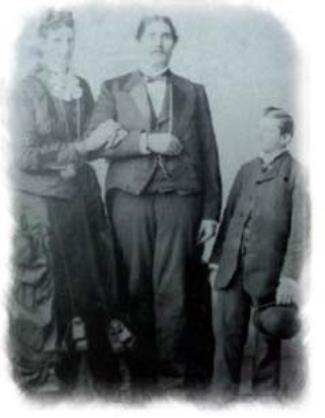


Tallest Married Couple
June 17, 1871
Anna Swan at 7 feet 11 inches (2.42 m) tall marries Martin Van Buren Bates at 7 feet 7.5 inches (2.324 m).


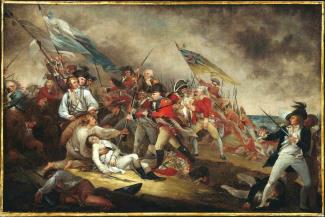


Don't fire until you see the whites of their eyes!
June 17, 1775
During the American Revolution Battle of Bunker Hill (Breed's Hill), colonial leaders declare, "Don't fire until you see the whites of their eyes." Although they suffered many more casualties, the British won the battle.


First Woman to Command an Operational U.S. Air Force Missile Command
June 17, 1993
Lt. Col. Patricia Fornes is sworn in as commander of the 740th Missile Squadron at Minot Air Force Base. The squadron had been commanded by her father from 1969 to 1971.


Watergate
June 17, 1972
Five men are arrested for breaking into the Democratic headquarters at the Watergate complex.


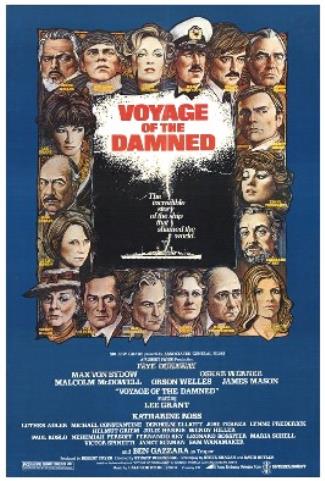


Voyage of the Damned
June 17, 1939
The German liner St. Louis arrives in Belgium. It had been on a month-long voyage carrying more than 900 Jews attempting to escape the Nazis by traveling from Germany to Cuba. All but 28 passengers were turned away by the Cuban, U.S., and Canadian governments and returned to Europe where many died in the Holocaust. These events were the basis of the 1976 film Voyage of the Damned.


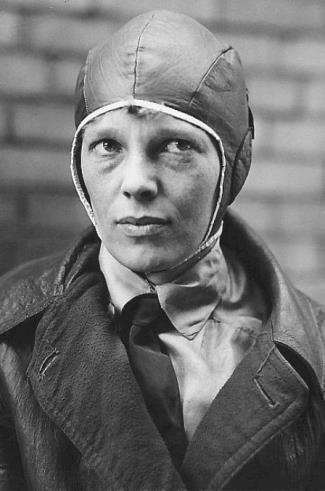 Earhart just prior to flight
Earhart just prior to flight
 Earhart just prior to flight
Earhart just prior to flight
First Transatlantic Flight by a Woman
June 17, 1928
Amelia Earhart takes off in the Friendship, completing the trip following day. She didn't pilot the flight, later commenting, "Stultz did all the flying - had to. I was just baggage, like a sack of potatoes. …maybe someday I'll try it alone," which she did in 1932.





Barney Google and Snuffy Smith
June 17, 1919
The comic strip Barney Google and Snuffy Smith, created by cartoonist Billy DeBeck, is first published, appearing on the sports page of the Chicago Herald and Examiner. It was originally titled Take Barney Google, for Instance.
Barney's horse Spark Plug was introduced in 1922 and Snuffy Smith was added in 1934.


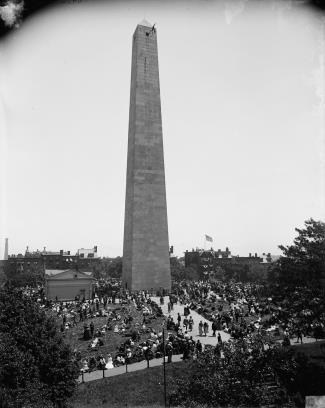


Bunker Hill Monument
June 17, 1843
The Bunker Hill Monument is completed and dedicated, with an address given by Daniel Webster. The 221-foot (67 m) granite obelisk was erected between 1825 and 1843 in Charlestown, Massachusetts and commemorated the Battle of Bunker Hill, fought June 17, 1775 during the American Revolution.
It was during this battle that colonial leaders declared, "Don't fire until you see the whites of their eyes." Although they suffered many more casualties, the British won the battle.
When construction of the Bunker Hill Monument stalled, Sarah Josepha Hale (the author of Mary Had a Little Lamb) raised $30,000 for its completion.


Birthdays
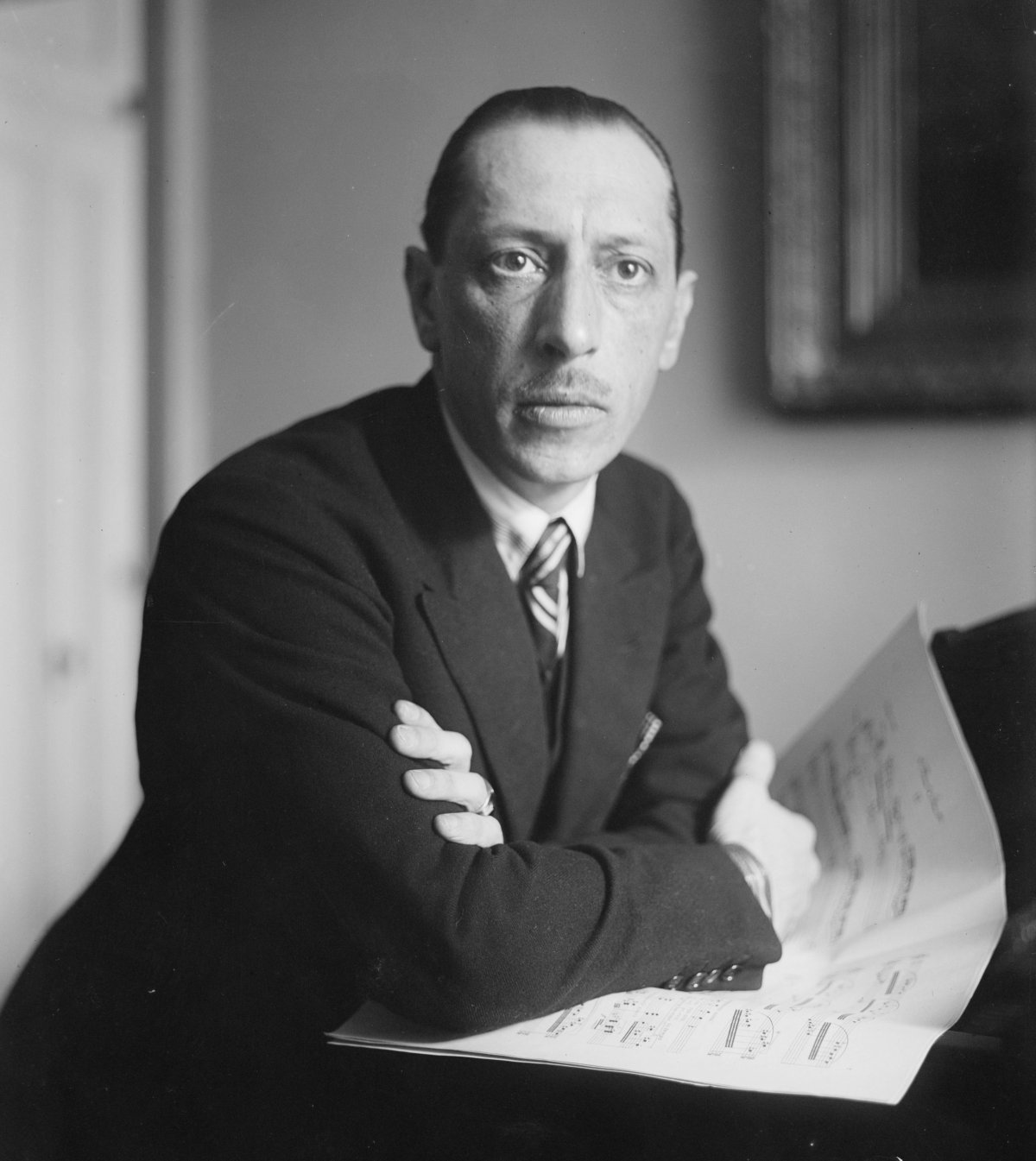


Igor Fedorovich Stravinsky
Born June 17, 1882 d. 1971
Russian composer. Music: The Firebird, The Rite of Spring, and Petrushka.


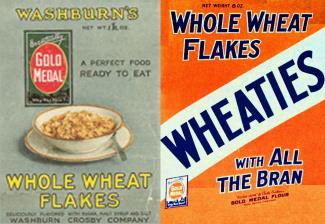



Inventor of Wheaties
George Cormack
Born June 17, 1870 d. 1953
American inventor of Wheaties cereal (1921). Originally called "Washburn's Gold Medal Whole Wheat Flakes," the name "Wheaties" was chosen by a company-wide naming contest. They were invented after a clinician working for the Washburn Crosby Company (later General Mills) accidentally spilled wheat gruel onto a hot stove, transforming it into wheat flakes. Cormack, the head miller, developed the process to make the flakes strong enough to withstand packaging.
Future U.S. President Ronald Reagan was doing play-by-play recreations of Chicago Cubs baseball games and in 1937 was selected as the most popular Wheaties announcer in the nation. He was awarded a trip to California, where he took a screen test and began his movie career.



Mark Linn-Baker
Born June 17, 1954
American actor. TV: Perfect Strangers (Larry). Film: My Favorite Year (1982, narrator Benjy Stone)



Chance Browne (Robert David Browne)
Born June 17, 1948 d. 2024
American cartoonist. Artist for Hi and Lois (1989‑), which he took over after his father, Dik Browne, died.


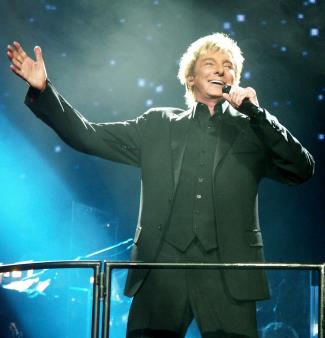 Photo Credit: BECKER matt@melodicrockconcerts.com
Photo Credit: BECKER matt@melodicrockconcerts.com
 Photo Credit: BECKER matt@melodicrockconcerts.com
Photo Credit: BECKER matt@melodicrockconcerts.com

Barry Manilow (Barry Alan Pincus)
Born June 17, 1943
American Emmy-Tony-Grammy-winning singer. Music: Mandy (1975, #1), I Write the Songs (1976, #1), and he sang the McDonald's jingle You Deserve a Break Today.



John Hersey
Born June 17, 1914 d. 1993
Chinese-born American Pulitzer-winning author, journalist. Writings: A Bell for Adano (1944, Pulitzer).



Ralph Bellamy
Born June 17, 1904 d. 1991
American Tony-winning actor. Stage: Sunrise at Campobello (1958, Franklin D. Roosevelt, Tony Award), The Winds of War (President Franklin D. Roosevelt), Rosemary's Baby (1968, evil doctor), Trading Places (1983, conniving billionaire), and as Ellery Queen in the films of the 1940s.



Edward I
Born June 17, 1239 d. 1307
King of England (1272-1307).


Deaths

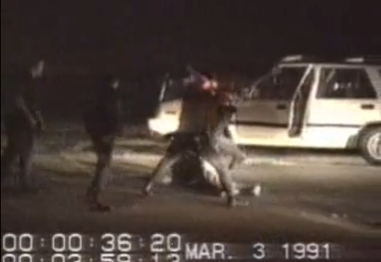


Rodney King
Died June 17, 2012 b. 1965
Los Angeles police punching bag. In 1991, he was videotaped being beaten by police officers after a high speed auto chase. The acquittal of four officers charged in the incident led to the 1992 Los Angeles riots.
He married one of the jurors from his civil suit against the city of Los Angeles, in which he won $3.8 million dollars.
King drowned in his swimming pool. Toxicology reports showed a combination of alcohol, cocaine, and marijuana in his system, which along with a heart condition may have triggered a cardiac arrhythmia, leaving him unable to save himself.


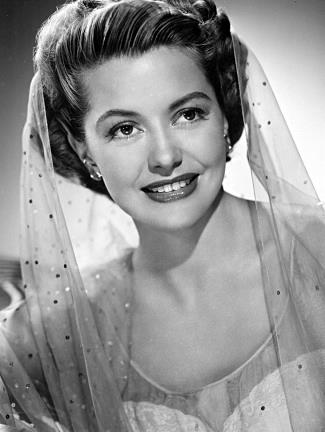



Cyd Charisse (Tula Ellice Finklea)
Died June 17, 2008 b. 1922
American dancer, actress. Film: Singin' in the Rain (1952).



Thomas S. Kuhn
Died June 17, 1996 b. 1922
American science historian. His book, The Structure of Scientific Revolutions (1962), was one of the most influential books in 20th-century social sciences, humanities, and philosophy.



Swale
Died June 17, 1984 b. 1981
American thoroughbred racehorse. He won the Kentucky Derby and Belmont Stakes in 1984. He died just 8 days after winning the Belmont. The pathologist "found a very small area of fibrosis" below the aortic valve and that "lesions of this type can produce an arrhythmia in the heart, which can be fatal".



Zerna Addis Sharp
Died June 17, 1981 b. 1889
American author. She created the Dick and Jane primary readers. "Run Spot run. See Spot run."


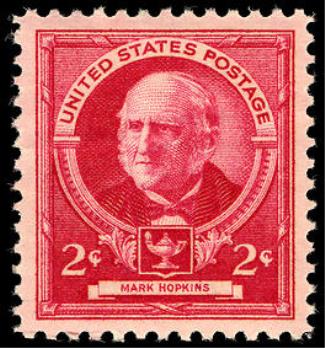



Mark Hopkins
Died June 17, 1887 b. 1802
American educator. U.S. President James A. Garfield once commented, "A pine bench, with Mark Hopkins at one end of it and me at the other, is a good enough college for me!"


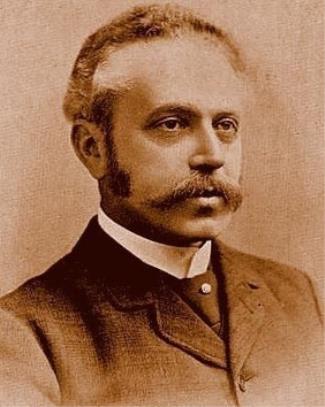



Father of the Bicycle Industry
James Starley
Died June 17, 1881 b. 1830
English inventor. He is considered the father of the bicycle industry. He also invented the open differential.



John Brown Russwurm
Died June 17, 1851 b. 1799
American publisher. He co-published the first Negro newspaper in American (1827, Freedom's Journal).



Adeodatus II
Died June 17, 676 b. ????
Italian religious leader, 77th Pope (672-676).





